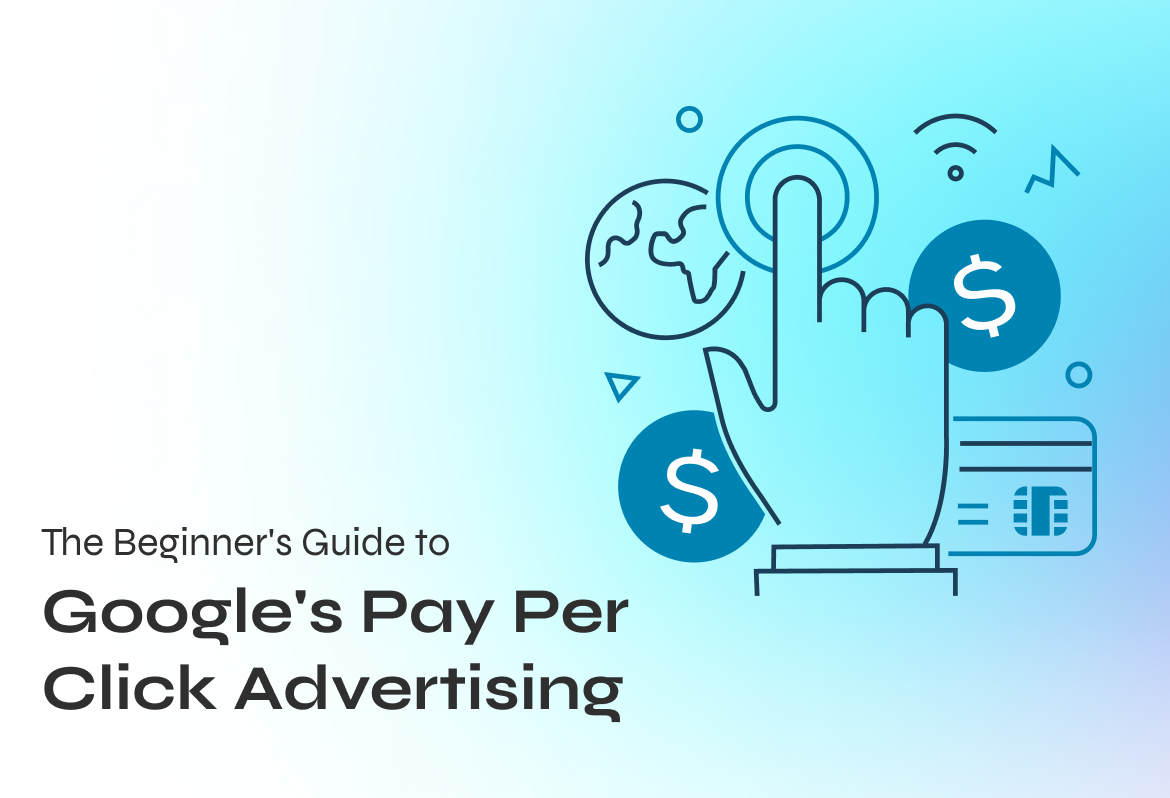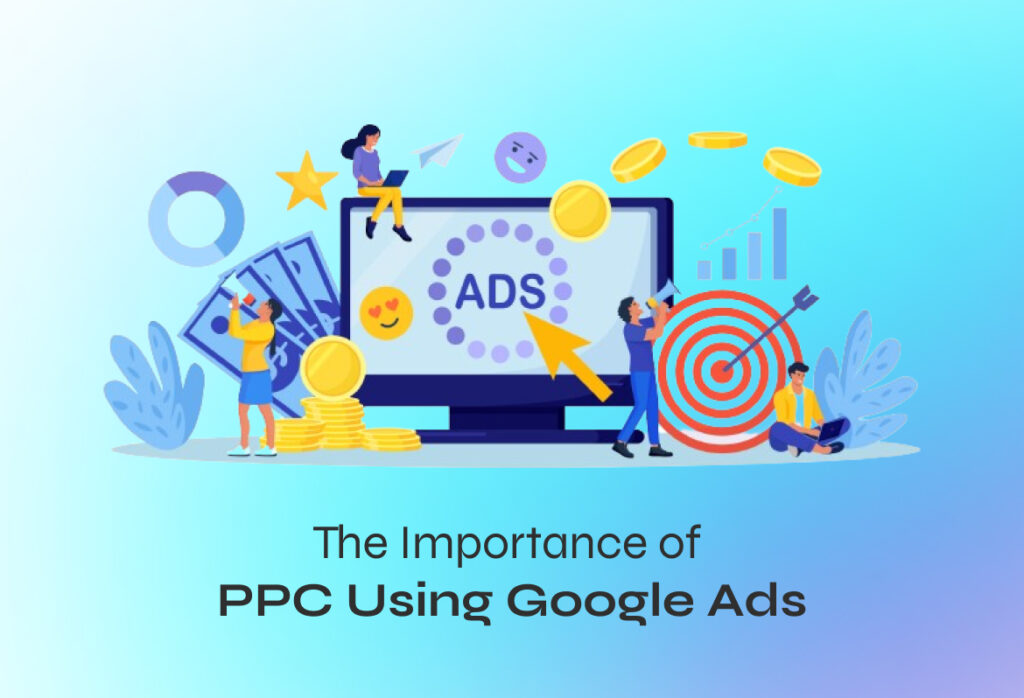Google’s Pay Per Click (PPC) advertising is a big part of what makes online marketing work. This guide is here to help you understand it easily, even if you’re new to it. With PPC, you pay a small amount each time someone clicks on your advertisement. It’s a straightforward way to bring more visitors to your website. In this guide, we’ll go through everything about PPC: from what it is and how to start your ad campaign to becoming good at managing your ads.
This guide will be helpful for almost everyone whether you own a small business, are a marketing professional, or just someone curious about how online advertising works, you’ll find useful information here. We begin by explaining the basics of PPC advertising. Then, we’ll guide you through more detailed steps and tips. By the end, you’ll have a clear understanding of how to use Google PPC to grow your business or brand online.
Understanding Pay Per Click Advertising
The Basic Concept
Pay Per Click (PPC) advertising is a type of digital marketing where advertisers pay a fee each time someone clicks on their online ads. This is different from traditional advertising, where you pay for the space your ad occupies. In PPC, it’s all about performance – you only pay when someone actually interacts with your ad. This approach has changed online advertising by making it possible to target ads more accurately and control budgets more effectively. While about 45% of small businesses use some form of online advertising, many still find the concept of PPC a bit tricky to understand.
A Brief History
The concept of PPC advertising emerged in the late 1990s as a response to the growing need for more efficient online advertising methods. Google Ads, which was called Google AdWords when it started in 2000, quickly became a big name in PPC advertising. People liked it because it reached a lot of people and had good ways to target ads. Today, Google Ads is the biggest player in PPC advertising, with a market share of 28%. It’s a really important tool for anyone who wants to advertise on the internet.
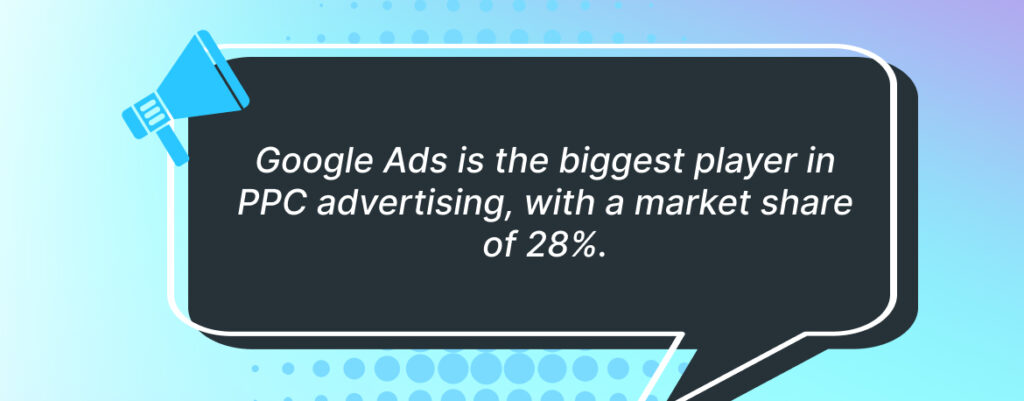
Key Benefits of Pay Per Click Advertising
- Cost-Effectiveness: With PPC, you only pay when someone clicks on your ad, making it a cost-effective option.
- Targeted Advertising: PPC allows you to target specific demographics, locations, and even times of day.
- Measurable Results: Every aspect of PPC campaigns is measurable, from the number of clicks to conversions.
- Quick Results: Unlike organic search methods, PPC can provide immediate traffic and results.
- Flexibility: Campaigns can be quickly adjusted based on performance data.
PPC advertising, particularly through Google, offers a flexible and efficient way to reach potential customers. With its pay-for-performance model, it caters to various budgets and marketing goals. And remember that a well-crafted ad will probably move more viewers to take action, and interestingly, advertisements influence 90% of people to make a purchase.
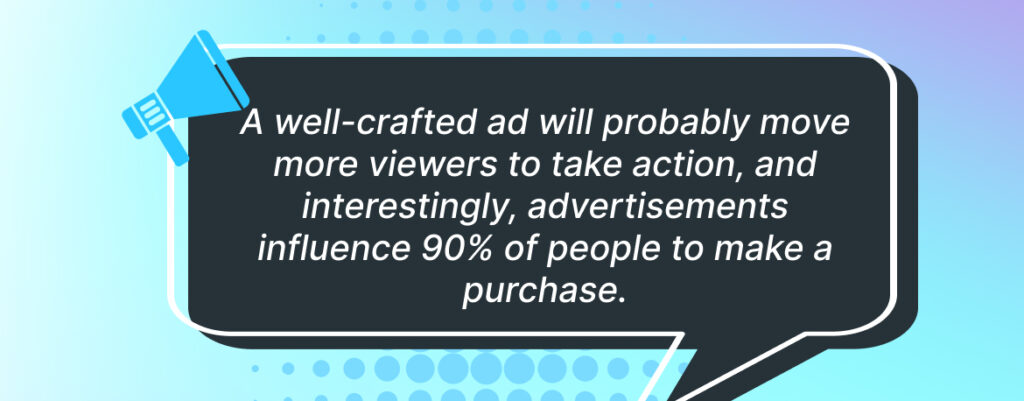
How Does Pay Per Click Advertising Work?
The Mechanism of Google PPC Advertising
The mechanism of PPC advertising is straightforward yet powerful. When you create a PPC campaign, you’re essentially bidding for ad space on a platform like Google. Your ads appear in search engine results or on websites that are part of Google’s advertising network, depending on your settings.
- Keyword Relevance: At the heart of PPC is keyword targeting. You choose relevant keywords for which your ad should appear. For example, if you sell handmade candles, you might target keywords like “handmade scented candles” or “artisan candles”.
- The Bidding Process: PPC operates on a bidding system. You set a maximum bid – the most you’re willing to pay for a click on your ad. Your bid competes with others targeting the same keyword, and this competition determines your ad’s placement.
- Ad Placement: Higher bids and better ad quality can lead to higher ad placement. Google’s algorithm considers both factors to determine which ads appear in the top positions.
- Cost Per Click (CPC): You only pay when someone clicks on your ad. The actual cost can be less than your maximum bid, depending on the competition and your ad’s quality score.
Pricing Models Of Google PPC Advertising
- Cost Per Click (CPC): You pay for each click on your ads.
- Cost Per Mille (CPM): Alternatively, some campaigns can be set to charge per thousand impressions (views) instead of clicks.
Importance of Quality Score
Google assigns a quality score to each ad, which affects both your ad’s placement and the cost per click. A high-quality score, influenced by factors like ad relevance and landing page quality, can lower your cost per click and improve ad placement.
Getting Started with Google PPC Advertising
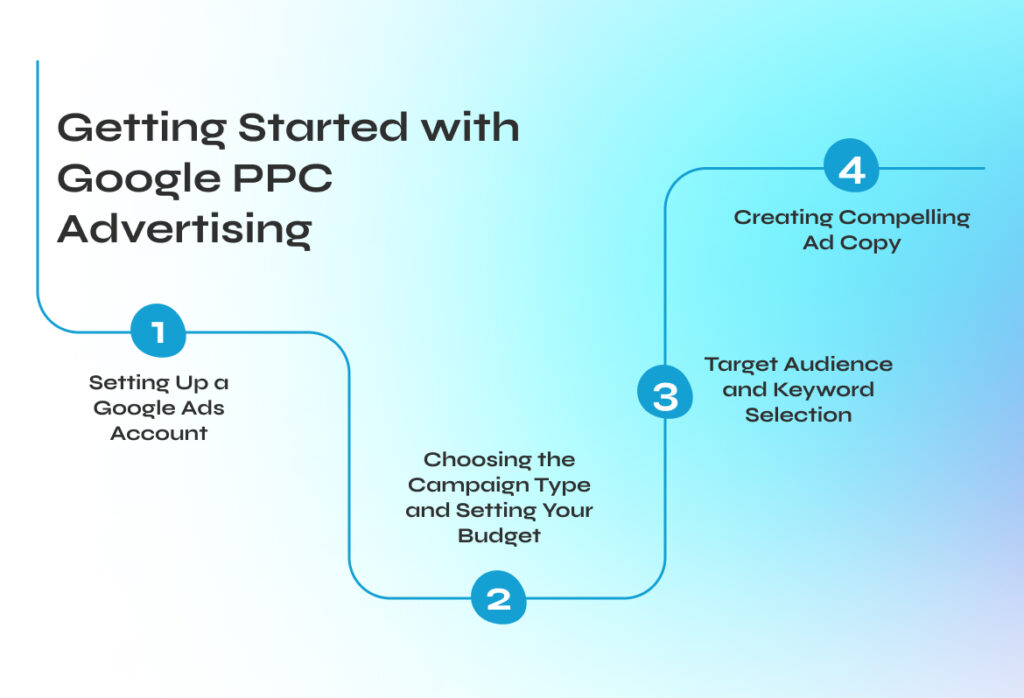
Setting Up a Google Ads Account
The first step in your Google PPC journey is creating a Google Ads account, which is your gateway to managing PPC campaigns. This process is straightforward, requiring a Google account to sign up on the Google Ads website. Once your account is set up, defining clear campaign goals is essential. Determine what you want to achieve, be it increasing website visits, generating leads, or driving sales. Having a specific objective is critical as it guides the strategic direction of your PPC campaigns.
Choosing the Campaign Type and Setting Your Budget
After account setup, you’ll need to choose the right campaign type. Google offers various options like Search, Display, and Video campaigns, each serving different marketing needs. Your choice should align with your overall advertising objectives and target audience. Budgeting is an equally crucial aspect, where you decide on a daily spend for your campaigns. Google Ads provides estimation tools to help gauge the expected traffic and click rates based on your budget, enabling a balance between reach and affordability.
Target Audience and Keyword Selection
Targeting your ads correctly is a pivotal part of PPC success. This involves specifying the geographic locations, languages, and demographic details of your intended audience. Accurate targeting ensures your ads reach the people most likely to be interested in your offerings. Equally important is the selection of keywords. Utilizing tools like Google’s Keyword Planner helps you find relevant and effective keywords. The emphasis here is on relevance—selecting keywords that resonate with your products or services and are commonly used by your target audience.
Creating Compelling Ad Copy
The final step in setting up your campaign is crafting the ad copy. This is where your product or service offering is communicated to potential customers. Your ad copy should be clear, engaging, and include a compelling call-to-action. It’s crucial for the ad copy to be succinct yet persuasive, highlighting the unique value proposition of what you’re offering. Well-crafted ad copy significantly influences the click-through rates and effectiveness of your PPC campaign.
Pay Per Click Management: Best Practices
Effective management of your PPC campaigns is essential for maximizing return on investment. Here are some best practices to help you manage your Google PPC campaigns efficiently:
1. Regular Monitoring and Adjustment
- Track Performance: Regularly review key metrics like click-through rate (CTR), cost per click (CPC), and conversion rate.
- Adjust Bids: Modify your bids based on performance data. Increase bids on high-performing keywords and reduce or pause low-performing ones.
- Refine Keywords: Continuously research and update your keyword list. Remove underperforming keywords and add potential new ones.
2. Enhance Ad Quality
- Optimize Ad Copy: Ensure your ad copy is clear, relevant, and includes a strong call-to-action.
- Improve Landing Pages: Direct users to high-quality, relevant landing pages. Ensure a good match between your ads and the landing page content.
3. Use Advanced Targeting Options
- Demographic Targeting: Tailor your ads based on age, gender, and other demographic details.
- Remarketing: Re-engage visitors who have previously interacted with your website but did not convert.
4. Utilize Automation and Smart Bidding
- Automated Rules: Set rules to automate certain actions based on specific conditions in your campaign.
- Smart Bidding: Use Google’s machine learning-powered bidding strategies to optimize for conversions or conversion value.
5. Test and Optimize
- A/B Testing: Regularly test different elements of your campaigns (e.g., ad copy, landing pages) to see what works best.
- Use Analytics: Integrate Google Analytics to gain deeper insights into user behavior and campaign effectiveness.
6. Stay Updated with Trends and Changes
- Keep Learning: PPC is a constantly evolving field. Stay informed about the latest trends and changes in Google Ads.
Effective PPC management is an ongoing process requiring vigilance, adaptability, and a continuous effort to optimize. With these best practices, you can enhance the performance of your Google PPC campaigns and achieve better results.
Common Pitfalls in PPC Ads and How to Avoid Them
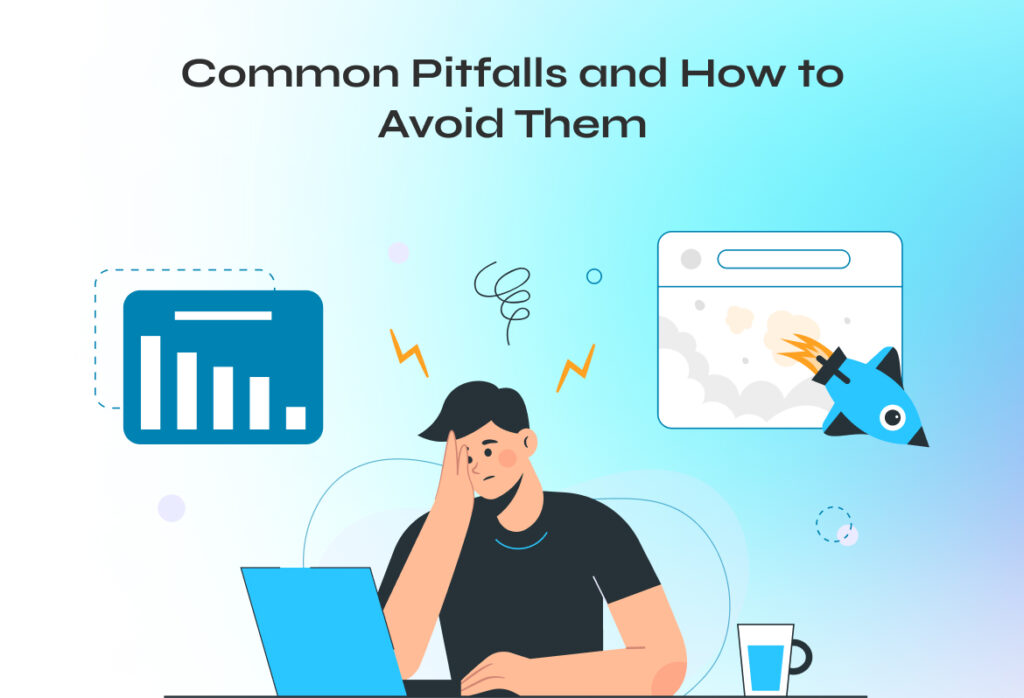
Misusing Keyword Match Types
A common pitfall in PPC advertising is not using keyword match types effectively. Relying solely on broad match keywords can attract irrelevant traffic, leading to unnecessary costs. To avoid this, it’s important to use a mix of keyword match types like exact match and phrase match. These match types offer better control over who sees your ads, ensuring more relevant and qualified traffic.
Neglecting Negative Keywords
Another oversight is failing to utilize negative keywords. Without them, your ads may appear for searches unrelated to your services or products. Regularly updating your negative keyword list is crucial to exclude irrelevant search terms. This proactive approach refines your ad targeting, improving campaign efficiency and effectiveness.
Overlooking Mobile Optimization
In today’s mobile-first world, not optimizing for mobile users can be detrimental. Ads and landing pages that aren’t mobile-friendly can result in a subpar user experience, negatively impacting conversion rates. Ensuring that both ads and landing pages are optimized for mobile devices is key to engaging with the increasingly large audience of smartphone users.
Inadequate Conversion Tracking
Many PPC campaigns falter due to inadequate conversion tracking. Proper tracking is essential to understand the effectiveness of your ads in driving desired customer actions. Implementing robust conversion tracking allows for the assessment and optimization of your campaigns, ensuring a better allocation of your advertising budget.
Disregarding Ad Quality
Finally, a significant pitfall is neglecting the quality of your ads. Ads with poor content or weak calls-to-action can lead to lower performance and higher costs. High-quality ads with relevant and engaging content are critical in attracting clicks and achieving campaign goals. A focus on creating well-crafted ads is essential for the success of your PPC efforts.
FAQs
What is Google Pay Per Click Advertising?
Google PPC advertising is an online marketing strategy where businesses pay a fee each time their ad is clicked on Google’s search engine or affiliated sites.
How Does Pay Per Click Advertising Work?
In PPC advertising, you create ads and bid on keywords. When someone searches for those keywords, your ad may appear. You pay a fee only if your ad is clicked.
Why is Google's Platform Preferred for PPC Advertising?
Google’s PPC platform is popular due to its extensive reach, sophisticated targeting options, and the ability to track and measure ad performance effectively.
What Are the Key Benefits of Using PPC Advertising?
PPC offers quick visibility, precise targeting, budget control, and measurable results, making it a flexible option for various marketing goals.
Can Small Businesses Benefit from Google PPC Advertising?
Absolutely. Google PPC is scalable, making it suitable for businesses of all sizes, including small businesses with limited budgets.
How Do I Start a PPC Campaign on Google?
Starting a PPC campaign involves setting up a Google Ads account, choosing relevant keywords, setting a budget, and creating compelling ad copy.
What is Pay Per Click Management?
PPC management involves overseeing and optimizing your PPC ad campaigns, including keyword selection, bid management, ad copy creation, and performance analysis.
How Can I Improve My Google PPC Campaign's Performance?
Improving performance can involve refining keywords, optimizing ad copy, using negative keywords, and regularly reviewing campaign analytics for insights.
Are There Common Mistakes to Avoid in PPC Advertising?
Yes, common mistakes include neglecting keyword research, ignoring negative keywords, failing to optimize for mobile, and not tracking conversions accurately.
How Important is Measuring ROI in PPC Advertising?
Measuring ROI is crucial in PPC advertising as it helps assess the effectiveness of your ads and informs strategic decisions for budget allocation and campaign adjustments.
Conclusion
As we wrap up this beginner’s guide to Google’s Pay Per Click advertising, it’s clear that PPC is a powerful tool in the arsenal of digital marketing strategies. With its ability to deliver targeted traffic and measurable results, PPC stands out as a crucial component for businesses looking to establish or expand their online presence.
From understanding the basic principles of PPC, setting up your first campaign, to mastering the art of PPC management, we’ve covered a range of topics to provide you with a solid foundation. Remember, the key to successful PPC advertising is continuous learning, regular monitoring, and constant optimization. By avoiding common pitfalls and employing best practices, you can maximize the efficiency and effectiveness of your campaigns.
As digital marketing continues to evolve, staying updated with the latest trends and changes in PPC advertising will be essential. The journey doesn’t end here; it’s an ongoing process of refinement and adaptation.
Embrace the dynamic nature of PPC advertising, and you’ll find it a rewarding and profitable component of your marketing strategy.

